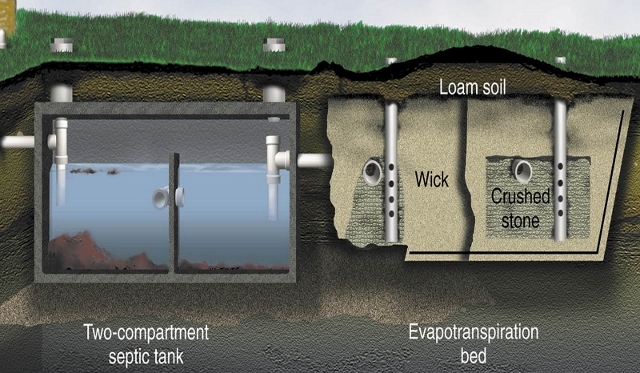An evapotranspiration (ET) bed treats wastewater by using evapotranspiration — the loss of water from the soil by evaporation and by transpiration from plants growing there.
ET beds are used where the soil cannot treat wastewater before it percolates to groundwater, such as in rocky soils, or where the soil prevents wastewater from percolating from the soil absorption field, such as in heavy clay soils.
ET systems are designed according to local evapotranspiration and rainfall rates, which vary across Texas. The local authorized agent, generally the local health department or regional office of the Texas Commission on Environmental Quality, can tell you what the rates are in your area. ET bed systems can be smaller in drier regions of the state compared to the same size household in wetter locations. These systems do not work in very wet areas where more rain falls than is evaporated or transpired.
There are two types of ET beds: lined and unlined. In lined systems, the ET bed is lined with a natural clay, synthetic or concrete liner. A liner is required if the surrounding soil is very permeable, such as in sandy gravel or karst limestone. Unlined systems can be used in highly impermeable soils such as heavy clays. In unlined systems, wastewater is disposed of by a combination of evaporation, transpiration and absorption, which is often called an evapotranspiration/absorption (ETA) system.

Related Resources:
 Operation and Maintenance Checklist: Evapotranspiration Beds
Operation and Maintenance Checklist: Evapotranspiration Beds
 Evapotranspiration Bed (and in Spanish)
Evapotranspiration Bed (and in Spanish)